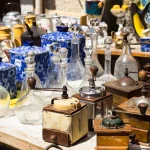The history of mummies
Mummies are a fascinating topic, steeped in mystery and history. For centuries, people have been captivated by the idea of preserved bodies, and the stories and cultures they represent. In this article, we’ll explore the history of mummies, the process of mummification, and why mummies continue to be a source of fascination and study today.
The history of mummies
The history of mummies dates back thousands of years to ancient civilizations in Egypt and South America. In Egypt, mummification was a religious practice that was believed to ensure the preservation of the body and the soul for the afterlife. The process of mummification involved removing the internal organs, treating the body with preservatives, and wrapping the body in linen bandages. The mummies were then placed in tombs and coffins along with various offerings and treasures, which were believed to be necessary for the deceased’s journey in the afterlife.
The mummies of ancient Egypt
The mummies of ancient Egypt were carefully preserved for thousands of years, and their discovery has provided us with a wealth of information about the lives and beliefs of the ancient Egyptians. Mummies have been found in various tombs and temples throughout Egypt, including the Valley of the Kings and the Temple of Karnak. The mummies of pharaohs and other high-ranking individuals were often entombed in elaborate sarcophagi and accompanied by wealth of offerings and treasures.
In South America, mummies were also an important part of ancient cultures, particularly among the Incas. The Inca mummies were not mummified in the same way as the Egyptians, but instead were preserved through a process of natural mummification. The bodies were often placed in high mountain locations, where the cold and dry conditions helped to preserve the body. The Inca mummies are particularly interesting because they provide us with a glimpse into the lives of this ancient civilization, including information about their clothing, customs, and beliefs.
The study of mummies
The study of mummies has been ongoing for centuries, and continues to be an area of active research today. Scientists and researchers use a variety of techniques to study mummies, including CT scans, X-rays, and chemical analysis. These techniques allow us to learn about the health, age, and cause of death of the individuals, as well as information about their diet and lifestyle. In recent years, DNA analysis has also been used to learn more about the genetics and ancestry of mummies.
One of the most important things that mummies have taught us is the importance of preservation. Mummies provide a unique window into the past, and give us a glimpse into the lives of ancient civilizations. They also provide us with a valuable source of information about the preservation of human remains, and the science behind it. Mummies have been used to study the effects of disease, and the changes that occur in the body after death. They have also been used to study the impact of environmental factors, such as climate, on the preservation of human remains.
The fascination with mummies has not diminished over the centuries. Today, mummies continue to be the subject of museum exhibits, books, movies, and television shows. They continue to captivate and intrigue people of all ages, and are a testament to the enduring mystery and wonder of the ancient world.
Are mummies real in the real world?
Yes, mummies are real and have been found in various parts of the world, particularly in areas with dry and arid climates that help to preserve the bodies. A mummy is a human or animal body that has been preserved through a process that involves drying out the body and protecting it from decay.
Mummies have been found in various parts of the world, including Egypt, Peru, China, and other regions where dry and arid climates have helped to preserve the bodies. These mummies are important archaeological and historical artifacts that provide insight into the lives, cultures, and practices of the people who lived in those regions.
In addition to natural mummies that occur as a result of environmental conditions, there have also been intentional mummifications performed by various cultures for cultural and religious reasons. These intentional mummies were typically reserved for royalty, high-ranking officials, or other important individuals in society.
What was the first mummy’s name?
The first mummy’s name is not known as mummification was a practice that existed in many ancient cultures around the world. The earliest known mummies come from the Chinchorro culture in South America and date back to around 5000 BCE. The Egyptians are perhaps the most well-known for their mummification practices, but the earliest known Egyptian mummy dates to around 3300 BCE and its name is also not known.
Is it still possible to make mummies today?
Technically, it is possible to make mummies today, but it is not legal in most countries and is generally considered unethical and disrespectful to human remains.
In ancient times, mummification was a process used to preserve bodies, often for religious or cultural reasons. The process involved removing internal organs and treating the body with various chemicals before wrapping it in linen or other materials. In modern times, the practice of mummification is generally associated with the ancient Egyptians, but mummies have been found in various cultures around the world.
Today, mummification is typically only done for scientific purposes, such as studying the techniques used in the past, or for the preservation of archaeological specimens. However, even for scientific purposes, mummification is generally only done on animals or non-human organisms, rather than human bodies.
In short, while it is technically possible to make mummies today, it is not a common or accepted practice for cultural, ethical, and legal reasons.
Look here: Daily Life in Ancient Egypt
What causes mummies to turn black?
There are several factors that can cause mummies to turn black, but the main reason is the breakdown of the organic compounds within the mummy’s tissues.
When a body is mummified, the tissues are dehydrated and preserved, but some organic compounds remain. Over time, these compounds can break down due to exposure to heat, humidity, and bacteria, which can cause the mummy to darken and turn black. In some cases, the breakdown of the tissues can also release oils and other substances that can stain the wrappings or other materials that were used to preserve the body.
Another factor that can contribute to the darkening of mummies is exposure to light. UV radiation from the sun or other sources can break down the organic compounds within the mummy, causing it to become darker over time.
In addition to these factors, some mummies may also become black due to mold or other types of microbial growth. This is especially common in humid environments, where moisture can promote the growth of bacteria and other microorganisms that can break down the mummy’s tissues and cause it to become discolored.
Overall, the darkening of mummies is a natural part of the process of decay and decomposition, and it is a common feature of mummies that have been preserved for long periods of time.
Look here: Egypt Travel Tips 2023
Who is Egypt’s most famous mummy?
Egypt‘s most famous mummy is arguably that of King Tutankhamun, also known as King Tut. King Tutankhamun was an ancient Egyptian pharaoh who ruled from around 1332 to 1323 BCE during the New Kingdom period.
King Tut’s tomb was discovered by archaeologist Howard Carter in 1922, nearly intact and filled with a vast array of treasures and artifacts. The discovery of the tomb of King Tutankhamun was one of the most significant archaeological finds of the 20th century, and it sparked a global fascination with ancient Egyptian history and culture.
King Tut’s mummy is also of great interest to archaeologists and historians, as it provides important clues about ancient Egyptian burial practices and the life of the young pharaoh. For example, analysis of King Tut’s remains has revealed that he likely died at a young age and suffered from several health problems, including a broken leg and a severe case of malaria.
Today, King Tut’s tomb and the treasures it contained are on display at the Egyptian Museum in Cairo, while his mummy is kept in a climate-controlled room in the Valley of the Kings, near Luxor, Egypt.
As for King Tut’s mummy, it is kept in a climate-controlled room in the Valley of the Kings, near Luxor, Egypt. The mummy has been examined several times over the years, using various technologies such as CT scans, in order to learn more about King Tut’s life and death. In 2019, a new study of the mummy using DNA analysis and other techniques revealed that King Tut likely died from complications related to a broken leg, rather than from murder or other causes as some had previously suggested.
Overall, King Tutankhamun remains one of the most famous and intriguing figures in ancient Egyptian history, and his mummy and tomb continue to fascinate and inspire people around the world.
Look here:GUIDE TO EGYPTIAN CULTURE AND CUSTOMS
In conclusion
mummies are an important part of our human history and continue to be a source of fascination and study. Whether they are ancient Egyptian pharaohs or Inca leaders, mummies provide us with a unique window into the lives of ancient civilizations, and the beliefs and customs that were so important to them. Through the study of mummies, we can learn about the science of preservation, and the impact that environmental factors and disease can have on the human body. Mummies are a valuable resource








